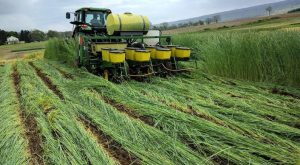People involved in agriculture across Wisconsin suspect that weather patterns across the Badger State have been changing over the last 50 years. Dr. Ed Hopkins, Assistant Wisconsin State Climatologist, examined the weather data from the last 50 years to examine that hunch and offers the following summary.
- Afternoon maximum temperatures around the state during summer (June, July and August) have increased by 0.6 Fahrenheit degrees, while the nighttime minimum temperatures in summer have increased since 1971 by three times as much (1.6 degrees), leading to an average statewide summer temperature increase of 1.3 degrees.
- The temperature increases have been much larger in winter, with the maximum temperature increasing by 3.6 degrees and the minimum winter temperatures climbing by 6.2 degrees, resulting in statewide average winter temperatures increasing by 5.0 degrees.
- The State Climatology Office has been maintaining a lake ice record of dates of ice-over and ice-out for the Madison area lakes (Mendota, Monona, and Wingra) that extends back to the 1850s. Plots of the duration of ice cover for the lakes reveal a general decrease in the ice duration by roughly three weeks over the last five decades.
- Inspection of the record of the dates of first and last occurrence of 32°F temperatures and the length of the frost-free season for the weather station at Plymouth (Sheboygan County) shows that since 1971, the length of the season has increased by approximately 16 days (or more than two weeks).
Extension Responds
Mike Ballweg serves as a member of the Extension Agriculture and Natural Resources Climate Change Team, developing educational programs to address challenges farmers face as weather patterns continue to evolve. How can cropping systems change to face a sharp increase in extreme precipitation events that have resulted in flooding, erosion, runoff, leaching of nutrients, and difficult planting and harvesting seasons?
Long term outcomes:
- Farmers will learn about and use practices known to reduce climate changes’ negative impacts, to include:
- Reduced tillage and adoption of no-till cropping systems
- Increased continuous living covers (cover cropping, perennial crops)
- Diversification of crop rotations
- Taking marginal land out of annual row crop production

Photo Credit: Penn State
Planting green cover-crop strategies help address extreme weather events




